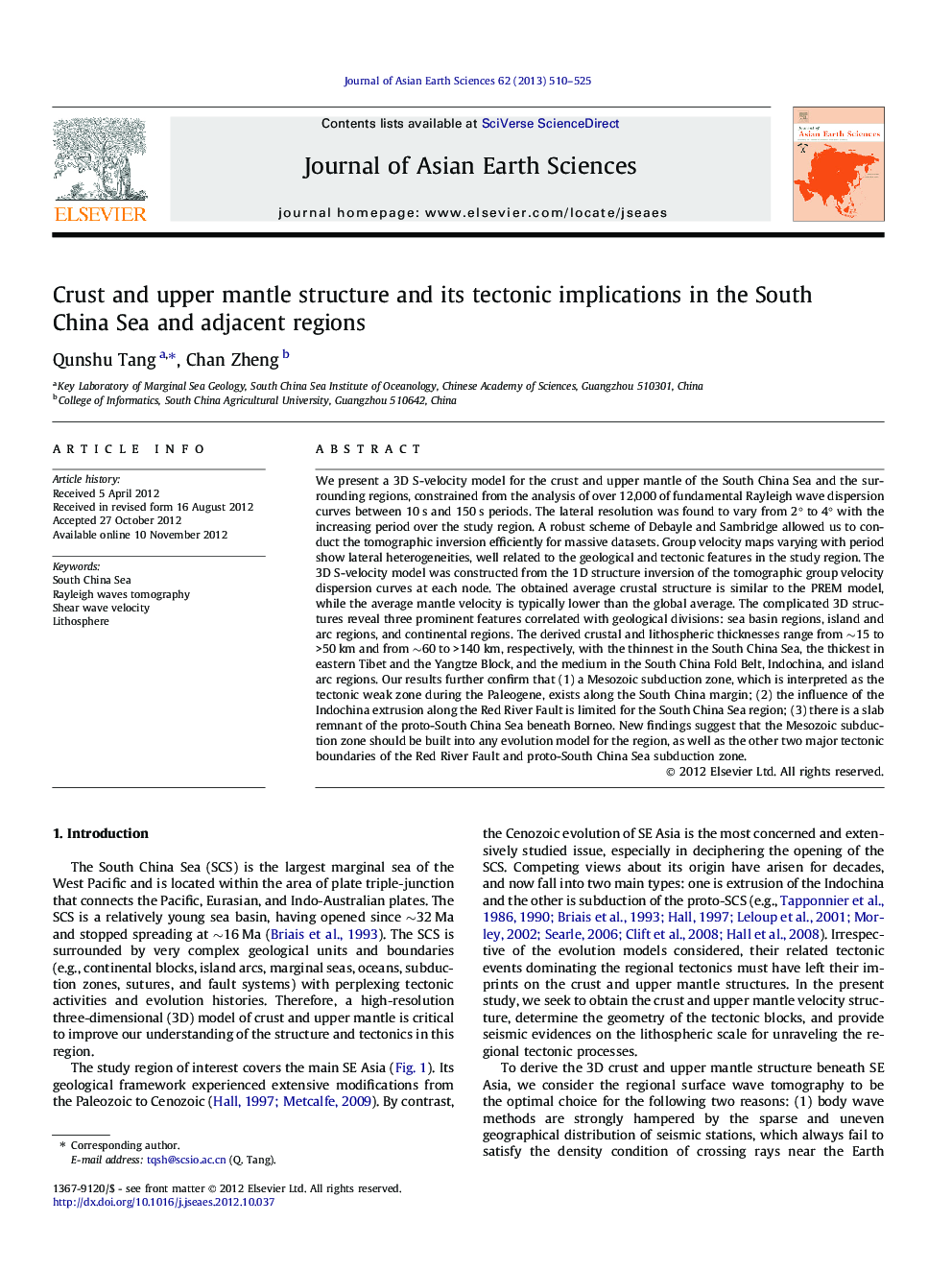| کد مقاله | کد نشریه | سال انتشار | مقاله انگلیسی | نسخه تمام متن |
|---|---|---|---|---|
| 4731293 | 1640403 | 2013 | 16 صفحه PDF | دانلود رایگان |
We present a 3D S-velocity model for the crust and upper mantle of the South China Sea and the surrounding regions, constrained from the analysis of over 12,000 of fundamental Rayleigh wave dispersion curves between 10 s and 150 s periods. The lateral resolution was found to vary from 2° to 4° with the increasing period over the study region. A robust scheme of Debayle and Sambridge allowed us to conduct the tomographic inversion efficiently for massive datasets. Group velocity maps varying with period show lateral heterogeneities, well related to the geological and tectonic features in the study region. The 3D S-velocity model was constructed from the 1D structure inversion of the tomographic group velocity dispersion curves at each node. The obtained average crustal structure is similar to the PREM model, while the average mantle velocity is typically lower than the global average. The complicated 3D structures reveal three prominent features correlated with geological divisions: sea basin regions, island and arc regions, and continental regions. The derived crustal and lithospheric thicknesses range from ∼15 to >50 km and from ∼60 to >140 km, respectively, with the thinnest in the South China Sea, the thickest in eastern Tibet and the Yangtze Block, and the medium in the South China Fold Belt, Indochina, and island arc regions. Our results further confirm that (1) a Mesozoic subduction zone, which is interpreted as the tectonic weak zone during the Paleogene, exists along the South China margin; (2) the influence of the Indochina extrusion along the Red River Fault is limited for the South China Sea region; (3) there is a slab remnant of the proto-South China Sea beneath Borneo. New findings suggest that the Mesozoic subduction zone should be built into any evolution model for the region, as well as the other two major tectonic boundaries of the Red River Fault and proto-South China Sea subduction zone.
► A high-resolution 3D shear velocity structure of South China Sea was imaged.
► Tomographic result shows a complicated structure beneath the South China Sea.
► Evolution of the South China Sea was controlled by three key tectonic boundaries.
Journal: Journal of Asian Earth Sciences - Volume 62, 30 January 2013, Pages 510–525
